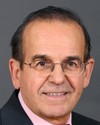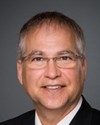I'd be happy to do that. Thank you very much.
As I mentioned earlier, when FedDev was initially set up, the crisis was pretty imminent, and the instruction from the Prime Minister was to create jobs as quickly as possible. I'll give you some examples of what we did.
There was the community adjustment fund, for example, of which FedDev took on the southern Ontario portion of this national program. We looked for applications, and we got a lot of them that would in fact create jobs the next day, such as replacing water treatment facilities. I'm sure in your ridings, as in mine, there were roads being repaved, and curbs, etc. These were jobs that were created immediately.
We also looked for opportunities to partner with folks who already had a finger into the economy, like IRAP and Yves Landry and some of these other great programs. But we travelled around the province as well. We spoke to literally hundreds if not thousands of mayors, economic development folks in communities, and university presidents. We spoke with people who were employed and people who were not employed. We continued to do that. We would take the feedback and start to look at our programs. We did in fact tweak the programs to the current needs.
So in the community adjustment fund, CAF-1 was actually a little different from CAF-2. If we were going to pave a street under CAF-1 because that's what a city wanted to do, under CAF-2 we would look for paving a runway at an airport, which might allow for future economic progress. As the economy continued to pick up, we changed again, and then again.
Just last November, we launched seven new programs. All of them are designed of course to create jobs as quickly as possible. The one I can tell you about is the graduate enterprise program, where we saw the need to put skilled folks into small and medium-sized businesses. We married that with graduates coming out of school into a weaker job market, and we saw the opportunity to put graduates into businesses. So we developed a program to do that. We saw the need for businesses to use more R and D to create, again, new processes or become more efficient, and to become more competitive, which all leads to more jobs.
So we developed a program called the applied research and commercialization initiative, where we said to colleges and universities, “Here's a pot of money, $15 million over two years. The way to get it is to go out and talk to small businesses around the province and help them be better.”
Recently I launched one of those programs where a luggage manufacturer needed to find a better way to produce aluminum luggage, and with the help of a college and their skilled students and laboratories, they did exactly that.
We launched seven new programs. They are for graduates. They're for small businesses. They're for not-for-profits. They're repayable contributions for profits. They're for venture capital folks to help our entrepreneurs, all the way up to the serious jobs of the long-term future, which is our youth STEM initiative.
This is again seeing an opportunity. From the science and technology file, I am hearing that scientists could probably do a little better at business. With the decline in R and D by the private sector, we felt that businesses could probably learn a bit more about the value of science. We can start that after people graduate from university, and I just mentioned that we are. But I believe the way to start that is actually in grade three, grade five, grade nine, and this is what we continued to hear on the ground.
So the youth STEM initiative is a $20 million initiative for folks who already do programs with kindergarten through to grade 12, to get them interested in those key subjects that we know will lead our innovation, which we know will improve our productivity and which we have seen other countries are beating us on. That is, PhDs and graduate degrees in science, technology, engineering, and mathematics.
Our programs now have gone from creating jobs tomorrow by improving infrastructure—they've been extremely successful—to creating jobs today, and longer-lasting, better quality jobs of tomorrow in that knowledge-based economy that we are facing as the global economy has changed.





